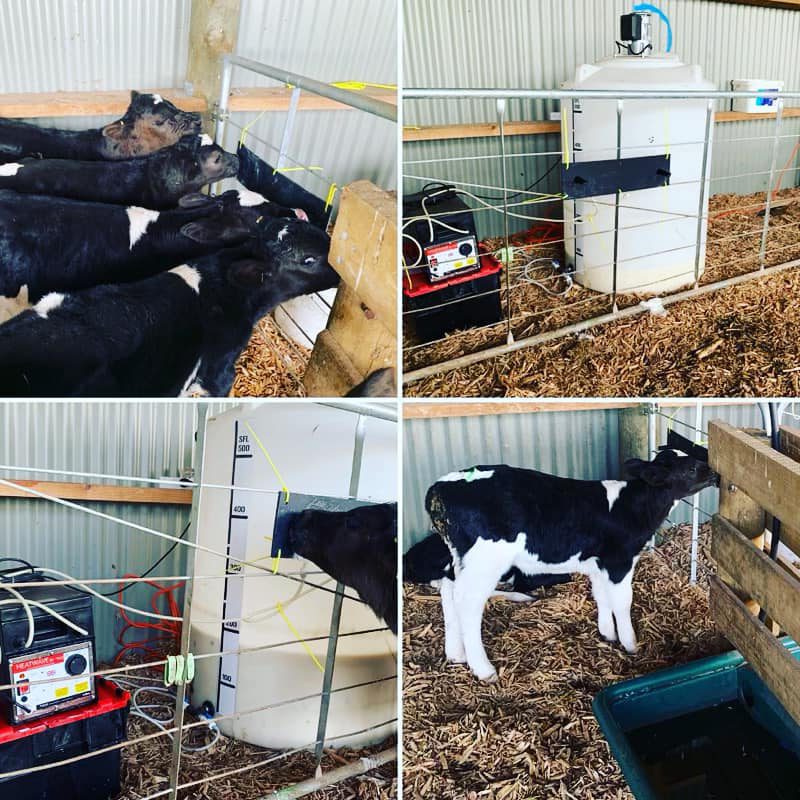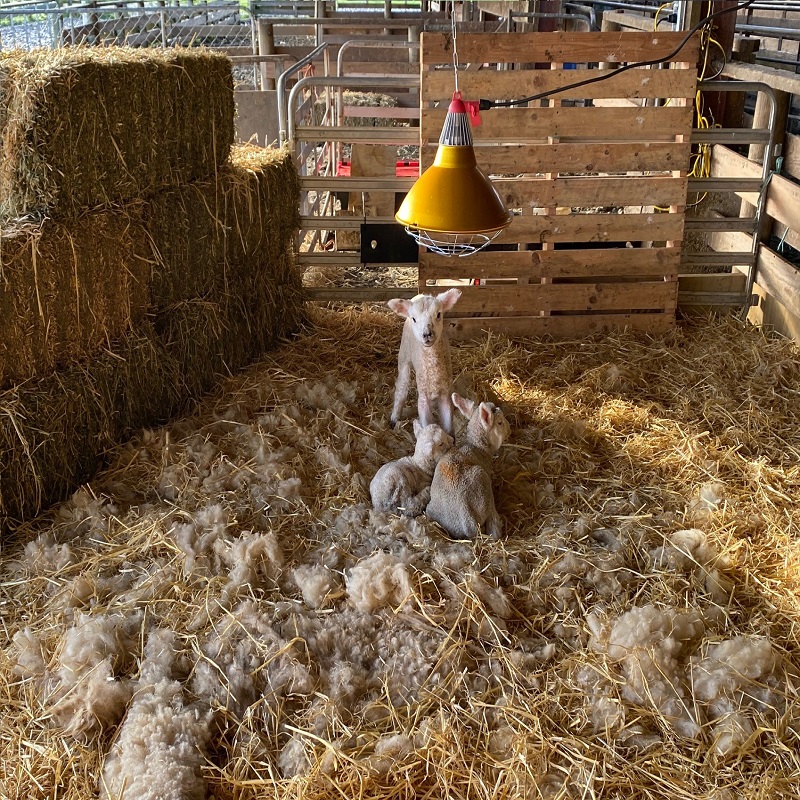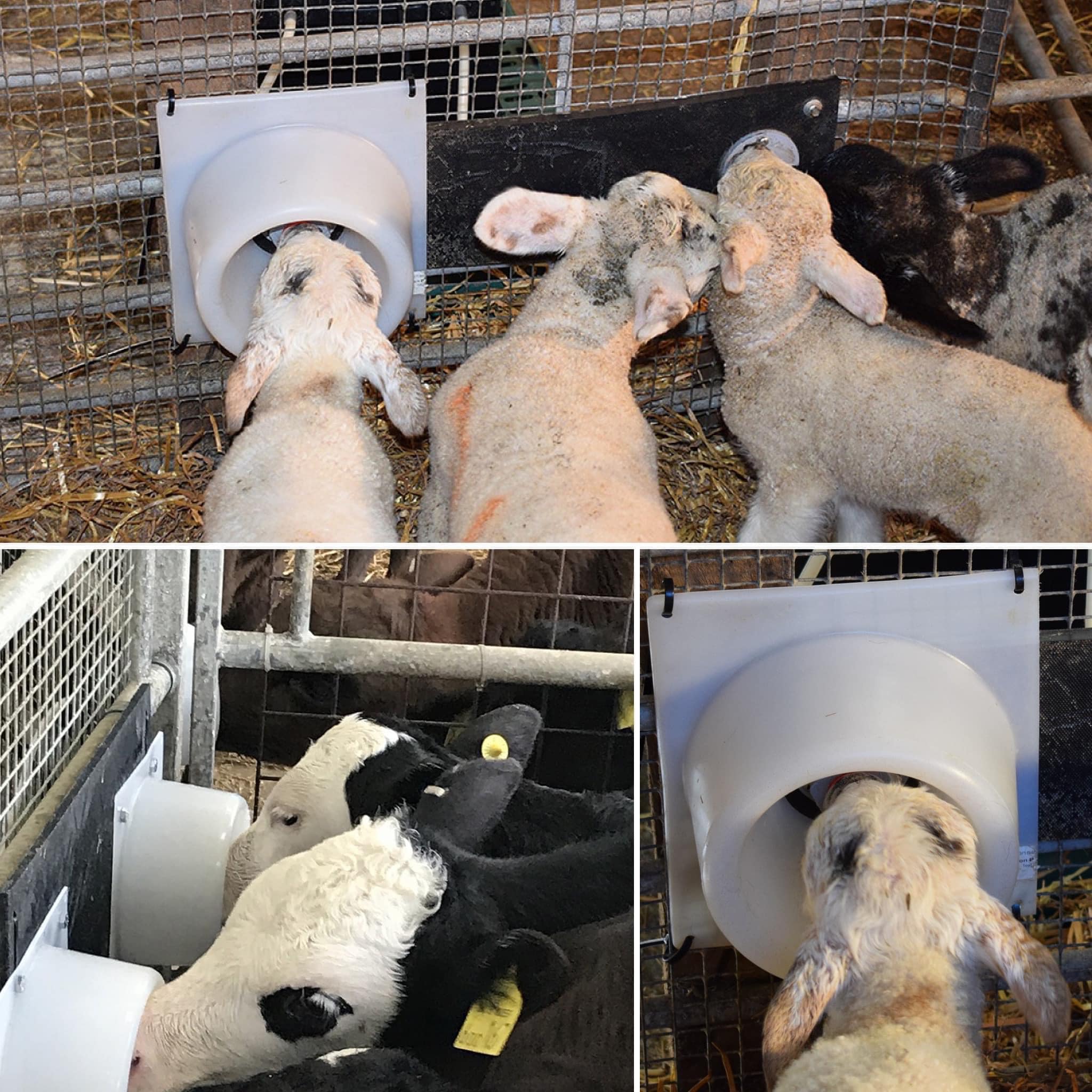HEATWAVE FAQ
HEATWAVE FAQ
Issues & Solutions
Air locks
- If the air is an issue from the milk source right through the heatwave to the teats, then the milk product being used maybe causing the issue. See Milk product issues.
- If air locks are being formed in the coil / between the coils and the teats, then try the following:
- Check elbows are pushed right inside the teats.
- Check there are no holes are in the tubing. Rodents/cats can make very fine holes that cannot be easily seen by eye.
- Check the NRVs are not blocked (A hot water wash cleans them out) or need replacing.
- Check all connectors are not damaged/broken.
- Check teats haven’t been chewed/bitten, have holes in them.
- Check the bulk head is on the heatwave correctly (not cross threaded), has not been pushed or pulled on. If it’s an old unit, the seal inside may need replacing (see changing Bulkhead O’Ring below).
- Put an older lamb in the pen if it’s the new baby pen to help suck the air through.
- Give the bubble pump a few squeezes to prime the line.
- Turn the Heatwave temperature down.
- Are the NRVs hanging vertically (not horizontally or on an angle).
- Heatwave location (flat surface, not up high or too low)
- Check temperature of milk / Electrical issues
- The Dial should adjust the milk temperature up or down. If not, the following could help:
- Check the power source including extension cables, power surge protector.
- Is the heatwave light on? If not, power supply issue.
- Push in the grommet button under the temperature dial to reset the unit
- Replace the fuse if you have power, but Heatwave will not work, and light won’t come on.
- Has water got into the unit and damaged it? Behind the dial / electrical area. Where was it stored?
- On a cold day you can add insulation to the hoses to keep the heat in the silicon tubing as it travels.
- In extreme conditions, we have experienced some power supplies to be ‘dirty’. EG, at the end of a dead-end road, old small power lines etc. In this case it can blow the fuse. Please contact us as you may need to change to a difference fuse.
Chewing teats or flattening teats:
- Is the elbow pushed all the way into the teat?
- Are you using the correct teats? Lamb/calf shoof excel teats
- How old is the lamb or calf? Is it time for them to go outside on a twice-a-day or once-a-day system?
- Do they have other feed available like hay, muesli or pellets and fresh water?
- How many animals are on the heatwave system? (30 calves / 50 lambs)
- Do you have teat guards? These can help with lambs fighting/pushing each other off. You can purchase these from DairyTech South.
- Is there milk in the line? If not see issues listed.
NRVs:
- How old are they? May be due to be replaced.
- Clean with hot water (this melts milk fat). Follow with chemical tablet wash.
- To test they are working blow both ends of the NRV, one way will work and the other will lock up.
Milk source to heat wave:
- If there are air issues between the milk source and the heatwave, mixed the powder up cold.
- Check there is now blockage in the Yellow filter attached to the metal connector or the barrel tap, check and clean.
- Don’t over aerate the milk powder. Avoid bubbles that can create air locks.
- O’Ring Seal in the bulkhead needs replacing?
- Use a food grade lube to help fitting push into bulkhead. EG Silicon grease, Vaseline etc.
Heatwave to teats:
- Air issues/Air locks from the Heatwave to the teats can be caused by a number of factors:
- Fine milk powder being mixed warm.
- Holes in tubing
- Holes in teats (from chewing, suggest teat-guards)
- Broken connectors/Ys etc.
- O’Ring Seal in the bulkhead needs replacing?
Lambs Vs calves
- Calves are stronger suckers and can suck air locks through.
- Lambs are more delicate so sometimes need a helping hand. EG A stronger lamb or prime the line.
- A lot of lamb rearing farmers will have two pens, one milk line goes to the new mob, another line goes to the older mob. They can also use two different milk powers.
- Both animals will chew teats, bump each other off if milk runs out / blocks etc.
- Suggestion is 30 calves or 50 lambs to one unit. This is the optimum stock level.
- Lambs wont drink as much at night, so you could turn it down at night to avoid the milk curdling.
- Check teat condition regularly.
Extra Notes:
- Water tank holds 25 liters
- Heating element 3Kw
- Power supply 240v
- Cut out safety switches
- The thermostat is pre-set to heat water up to 50 °C. Milk temp should be 25-35°C.
- Fuse is a 20mm 10A Fuse Fast Blow
More info can be found on DairyTech website https://dairytechsouth.co.nz/heat-wave-ad-lib/ and https://pyonproducts.com/shop/heatwave.





